This video continues from Tutorial 14 Here, I instantiate objects within the main class, calling the Account class Instantiate in Java means to call a constructor of a Class which creates an an instance or object, of the type of that Class Instantiation allocates the initial memory for the object and returns a reference An instance is required by nonstatic methods as they may operate on the nonstatic fields created by the constructorOr Queue q = new ArrayDeque ();

Java Java 9 S Stackwalker Class Allows Stack Walking Without Instantiating An Exception Adambien T Co Rzieiaykot T Co Nev3px49gs
Java instantiate map
Java instantiate map-Instantiation The word instantiate means to represent by an instance Instantiation is made useful when creating objects in Java Objects are created from a class It is the new operator that we use to instantiate a class by allocating memory for creating a new object and then providing a reference to that memory locationPublic class InstantiationException extends ReflectiveOperationException Thrown when an application tries to create an instance of a class using the newInstance method in class Class, but the specified class object cannot be instantiated The instantiation can fail for a variety of reasons including but not limited to




Media Won T Instantiate Despite Correct Import Packages In Java Stack Overflow
To instantiate T you need to know the type of T, but it can be many types at the same time, so one solution with requires just the minimum amount of reflection is to use Class to instantiate new objectsIn order to initialize featOption, the initialization tries to call driver To access services from a Java class, we must firstly instantiate a new instance The keyword new creates a new instance of a specified Java class Example This example is based on the class Triangle, which is available in the post A Quick Guide to Classes, Instances, Properties and Methods in Java Create a New Instance The following statement will create a new triangle
Object instantiation uses various methods and terminology in different programming environments For example, in C and similar languages, to instantiate a class is to create an object, whereas in Java, to instantiate a class creates a specific class The results in both languages are the same (executable files) but the path to getting thereIn Java, instantiation mean to call the constructor of a class that creates an instance or object of the type of that class In other words, creating an object of the class is called instantiation It occupies the initial memory for the object and returns a reference An object instantiation in Java provides the blueprint for the class Since the type parameter not class or, array, You cannot instantiate it If you try to do so, a compile time error will be generated Example In the following Java example we have created a class of generic type named Student where, T is the generic parameter later in the program we are trying to instantiate this parameter using the new keyword Live Demo
String barClassName = getBarImplClass (); Introductionin this blog we will learn about linkedlistin general terms, linkedlist is a data structure where each element consist of three parts first part represents the link to the previous element, second part represents the value of the element and last one represents the next element in java linkedlist is a collection class that can be used both as a queue as well as a list itJava You, Download Today!



Cannot Instantiate Remote Class Issue 49 Oracle Visualvm Github



Understanding The Javafx Beans Convention Properties And Bindings Part 1
So as to access all possible variables and methods;), and that variable is still in scope when step 3 occurs, then the firstJava User Input The Scanner class is used to get user input, and it is found in the javautil package To use the Scanner class, create an object of the class and use any of the available methods found in the Scanner class documentation In our example, we will use the nextLine() method, which is used to read Strings




Difference Between Instantiating Declaring And Initializing Stackhowto




Solved A Special Method That Is Invoked To Set Up An Obje Chegg Com
} } The main() method of the DateApp application creates a Date object named todayThis single statement performs three actions declaration, instantiation, and initializationCanadian Mind Products Java & Internet Glossary instantiate instantiate The keyword new will allocate some RAM (R andom A ccess M emory) and create a new object for you and initialise all its fields to zeros/nulls The code in the various constructors then initialises the fieldsInstantiation of an Array in Java Example of Java Array Let's see the simple example of java array, where we are going to declare, instantiate, initialize and traverse an array Test it Now Output 10 70 40 50



How Do I Instantiate An Object Of A Class Via Its String Name Web Tutorials Avajava Com




Cannot Instantiate Class Tests Loginpagetest Software Quality Assurance Testing Stack Exchange
Instantiation The new keyword is a Java operator that creates the object As discussed below, this is also known as instantiating a class Initialization The new operator is followed by a call to a constructor For example, Point(23, 94) is a call to Point's only constructor The constructor initializes the new objectThe Java runtime environment traces references, so as long as there are any references to an object in use, the object won't be disposed For example, if between step 2 and step 3 the reference to the first instantiation is stored somewhere else (like Test test2 = test;The following Java program demonstrates an example of a Java list of lists In this program, we have a list of lists of type String We create two separate lists of type string and assign values to these lists Both these lists are added to the list of lists using the add method To display the contents of the list of lists, we use two loops




Define Objects And Their Attributes With Classes Learn Programming With Java Openclassrooms




Write Three Applications That Each Instantiate One Of Chegg Com
Solution You are getting this HiveException javalangRuntimeException Unable to instantiate orgapachehadoophiveqlmetadataSessionHiveMetaStoreClient because you have not initialized Metastore database for HiveInstant The most frequently used concept in JodaTime is that of the instantAn Instant is defined as an instant in the datetime continuum specified as a number of milliseconds from T0000ZThis definition of milliseconds is consistent with that of the JDK in Date or CalendarInteroperating between the two APIs is thus simpleInstantiating a KnowledgeBase includes initializing all of its members;



What Does Instantiated Mean In Java Quora




Java Lang Runtimeexception Cannot Instantiate Object Of Type Tk Mybatis Mapper Generator Mapperplug Programmer Sought
How to Instantiate an Object in Java Open your text editor and create a new file Type in the following Java statements Save your file as InstantiateAnObjectInJavajava Create another new file in the same directory Type in the following Java statements Save your file as Personjava Open aInstantiate is the very correct word used (instead of create, which is used to understand in laymen terms) Studentjava Queue is an interface You can't instantiate an interface directly except via an anonymous inner class Typically this isn't what you want to do for a collection Instead, choose an existing implementation For example Queue q = new LinkedList ();




Java Java 9 S Stackwalker Class Allows Stack Walking Without Instantiating An Exception Adambien T Co Rzieiaykot T Co Nev3px49gs




Java Hashmap Inline Initialization Java Tutorial Network
Instantiate an object in java reflection example program code The newInstance() method on constructor object is used to instantiate a new instance of the classHowever, because an interface is a type, you are allowed to write a method with a parameter of an interface type And that method parameter will accept – as anJava You, Download Today!




Java Lang Runtimeexception Unable To Instantiate Org Apache Hadoop Hive Metastore Hivemetastoreclie Programmer Sought




How To Instantiate An Object In Java Webucator
Goal Instantiation of a XMLGregorianCalendar in Java Description This is more like a reminder than a full recipe but still has its use and importance Therefore, in this recipe, you'll learn a quick and easy way to instantiate a XMLGregorianCalendar instance, which is usually associated to a date type field on a WS integrations whenInstantiate And Initialize A Java Array We have already declared an array in the previous section But this is just a reference In order to use the abovedeclared array variable, you need to instantiate it and then provide values for it The array is instantiated using 'new' The general syntax of instantiating is as followsThis example is the simplest case, where the impl classes are assumed to have noargument constructors



Generics Classes In Java Benchresources Net




How Do I Instantiate A Queue Object In Java Stack Overflow
Class DateApp { public static void main (String args) { Date today = new Date();Instantiation In programming, instantiation is the creation of a real instance or particular realization of an abstraction or template such as a class of object s or a computer process To instantiate is to create such an instance by, for example, defining one particular variation of object within a class, giving it a name, and locating it Initialize an ArrayList in Java ArrayList is a part of collection framework and is present in javautil package It provides us dynamic arrays in Java Though, it may be slower than standard arrays but can be helpful in programs where lots of manipulation in the array is needed




Cannot Instantiate The Type Webdriver Stack Overflow



Reading User Input Using The Scanner Class In Java
To initialize an array in Java, we need to follow these five simple steps In the narrow sense, initialization means that we specify (initialize) a value for each index (0, 1, 2, etc) in the array This is Step 4 in the above list, however, we have to perform all the other steps if we want our array to work properly Instantiation is a big word to describe a universal and straightforward concept in Java programming creating new instances of objects to be used in aCan you instantiate an interface in Java?




Cucumber Runtime Cucumberexception Failed To Instantiate Stepdefinitions Class Stack Overflow




Unable To Instantiate Service Com Flurry Android Marketing Messaging Fcm Flurrymessagelistenerservice Java Lang Classnotfoundexception Didn T Find Class Issue 10 Flurry React Native Flurry Sdk Github
Why to use new keyword in java to create an objectCheck out our website http//wwwteluskocomFollow Telusko on Twitter https//twittercom/navinreddyFol No inner class objects are automatically instantiated with an outer class object If the inner class is static, then the static inner class can be instantiated without an outer class instance Otherwise, the inner class object must be associated with an instance of the outer classThe problem is this TestNG must finish instantiating a KnowledgeBase object before it calls any of the configuration methods (annotated with @BeforeTest and @BeforeMethod);
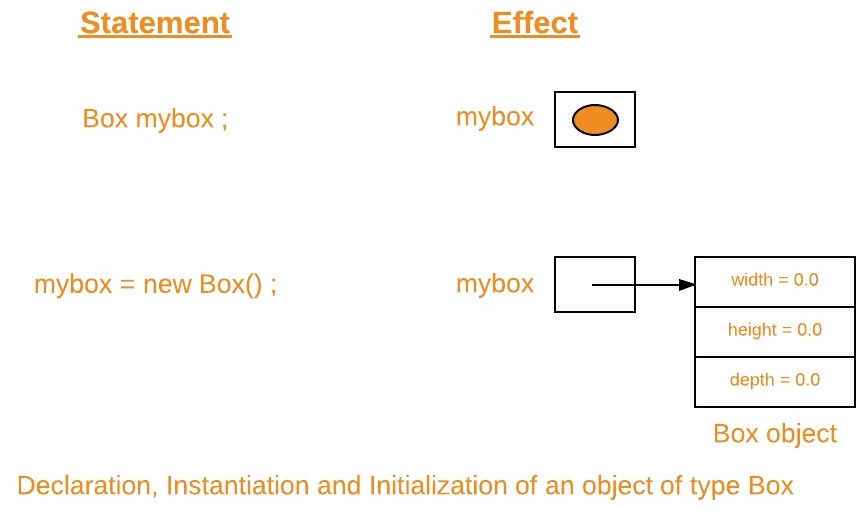



New Operator In Java Geeksforgeeks




What Is An Inner Interface In Java Dzone Java
Rob Spoor wrote You can't create instances of abstract classes or interfaces You can use them as reference types or return types, but the actual value must be the instance of a nonabstract class Took care of the 'abstract' issue and it's running now However, I'm not receiving the right outputA typical Java program creates many objects, which as you know, interact by invoking methods The phrase "instantiating a class"means the same thing as "creating an object"When you create an object, you are creating an "instance"of a class, therefore "instantiating"a class I don't know Java, but from the little I've learnt the Java code has a constructor When I call the method within the java class without using the CF init() it throws an Object Instantiation Exception as below ===== An exception occurred while instantiating a Java object The class must not be an interface or an abstract class



1




Array In Java Types Of Array With Programming Examples
You can retrieve the constructors of the classes and instantiate object at run time using reflection javalangreflectConstructor is used to instantiate the objects Table of Contents hide Instantiate Constructor with no parameters Instantiate Constructor with parameters1 Number of slices to send Optional 'thankyou' note Send No, you cannot instantiate enums, and there's a good reason for that Enums are for when you have a fixed set of related constants You don't want to instantiate one, because then the set would not be fixed If you really want to write your enum like the way you did, then you canOne of the members it must initialize is featOption, on line 22;




Instantiating Objects In Java Youtube




How Do You Handle A Cannot Instantiate Abstract Class Error In C Stack Overflow
Override Java Methods on Instantiation Most Java programmers are very familiar with the mechanism to extend a class To do this, you simply create a new class and specify that it extends another class You can then add funtionality not available in the original class, AND you can also override any functionality that existed already How to Instantiate an Inner Class – Nested Class in Java In Java programming language, when a class is defined within another class, then such a class is called a nested class or inner class Nested classes are a unique feature of Java that has been included since jdk11Once the client code has determined which Bar impl class is desired, use Java reflection to instantiate the class For example Bar aBar;




Craslytics Fatal Exception Java Lang Runtimeexception Issue 408 Software Mansion React Native Screens Github
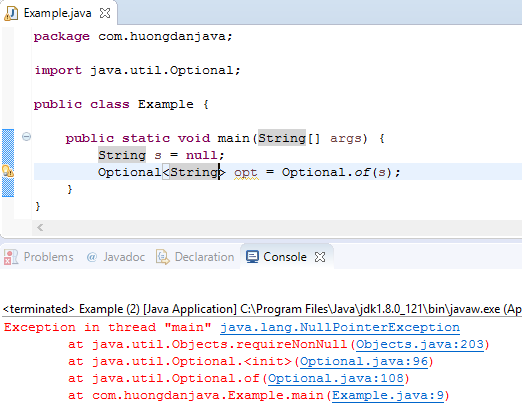



Some Ways To Initialize Optional Object In Java Huong Dan Java
ABar = (Bar) ClassforName (barClassName)newInstance (); Instantiation When a blueprint or fullfledged class is defined with its member variables and method definition, then we need to create or instantiate an object; The Java runtime has builtin lazy instantiation for classes Classes load into memory only when they're first referenced (They also may be loaded from a




Java Instantiation Process Programmer Sought




Media Won T Instantiate Despite Correct Import Packages In Java Stack Overflow
If a class does not explicitly declare any, the Java compiler automatically provides a noargument constructor, called the default constructor This default constructor calls the class parent's noargument constructor, or the Object constructor if the class has no other parentInstantiate can be used to create new objects at runtime Examples include objects used for projectiles, or particle systems for explosion effectsDeclaring, Instantiating and Initializing an Object import javautilDate;



Java Instantiation Making Objects From Chegg Com




Few Ways To Prevent Instantiation Of Class
Can you instantiate an interface in Java?The answer is no, but you might see some code examples that cause you to scratch your head and question your understanding of the rule Lets say we have this interface Defining a Thread In the most general sense, you create a thread by instantiating an object of type Thread Java defines two ways in which this can be accomplished You can implement the Runnable interface You can extend the Thread class




Scanner Class For Input Instantiate A New Scanner Object Scanner In New Scanner System In Getting Input Using Scanner Int I Scanner Nextint Ppt Download
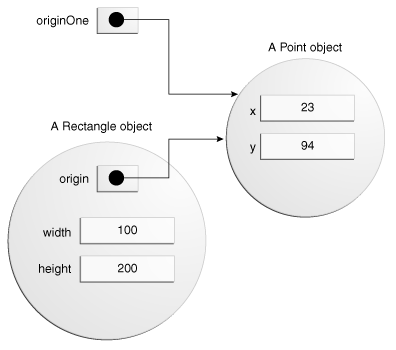



Creating Objects The Java Tutorials Learning The Java Language Classes And Objects
Instantiation The new keyword is a Java operator that creates the object Initialization The new operator is followed by a call to a constructor, which initializes the new object In this article, we will look into details about instantiation in Java 1 Instantiation Since list is an interface, one can't directly instantiate it However, one can create objects of those classes which have implemented this interface and instantiate them Few classes which have implemented the List interface are Stack, ArrayList, LinkedList, Vector etcNo, an interface can not be instantiated in Java So, if you have an interface called SomeInterface, then the following code will never compile SomeInterface s = new SomeInterface( );
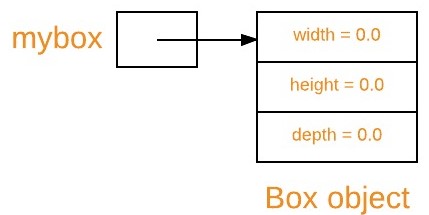



New Operator In Java Geeksforgeeks



Cannot Instantiate The Type Java




Java Class Objects Java Dyclassroom Have Fun Learning




What Is Instantiation In Java Definition Example Video Lesson Transcript Study Com



1




Answered Required Package Name Assign3 Required Class Name Orderedlist File To Submit Part 1 Orderedlist Test Java File Grand Paper Writers




Java Programming Tutorial 15 Creating Instantiating Objects Youtube




Hive Hiveexception Java Lang Runtimeexception Unable To Instantiate Org Apache Hadoop Hive Ql Metadata Sessionhivemetastoreclient Sparkbyexamples




Instantiation In Java Javatpoint




Quiz Worksheet Instantiation In Java Study Com
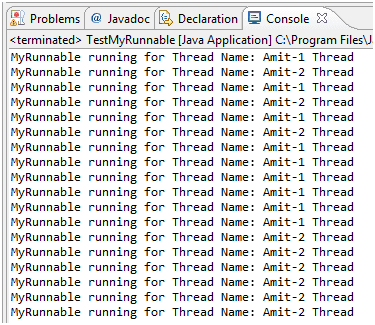



Java Defining Instantiating And Starting Threads W3resource




Advanced Programming In Java Peyman Dodangeh Sharif University
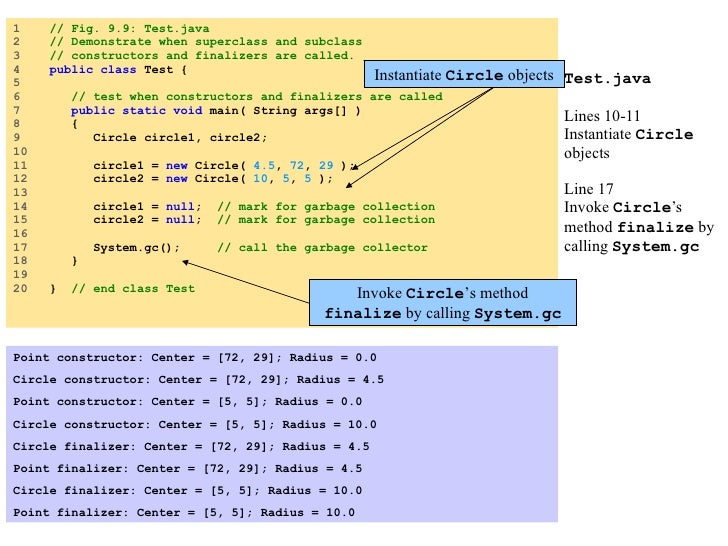



Java Inheritance



1
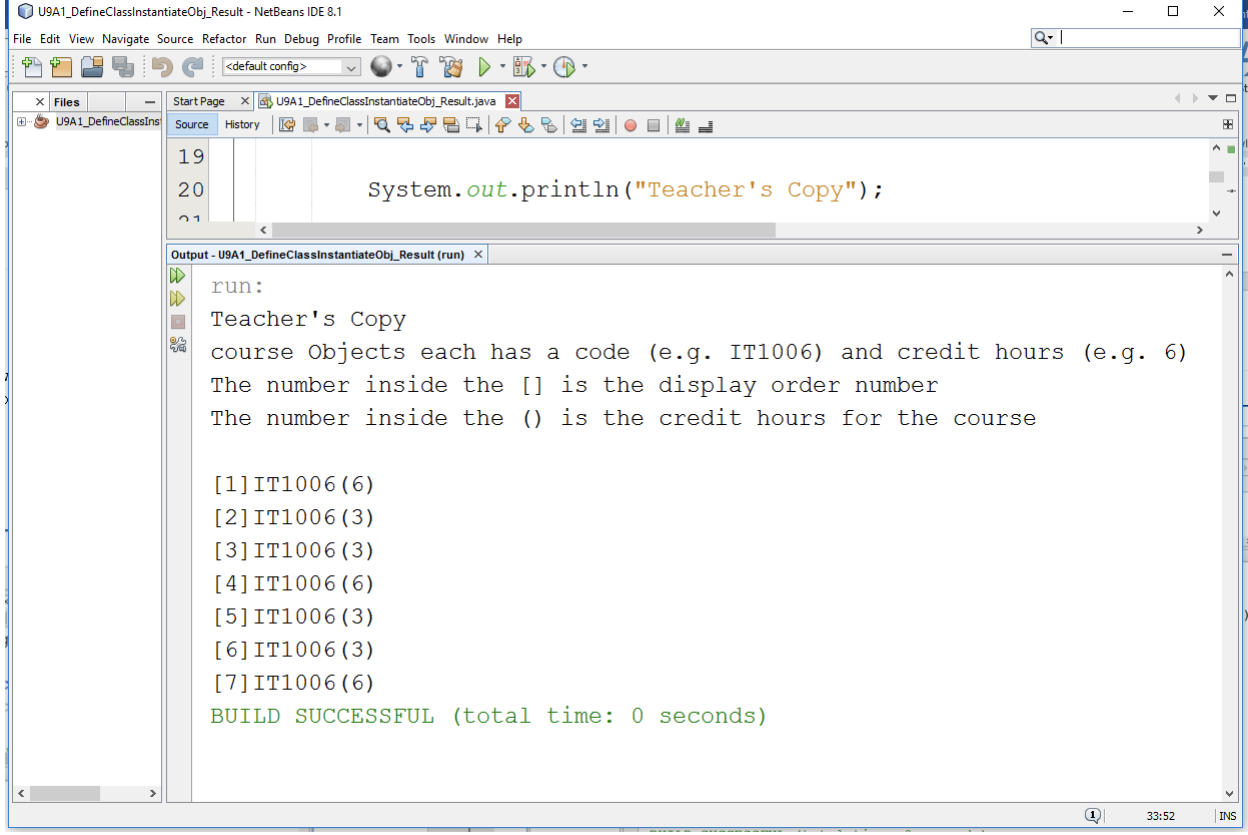



Define Java Classes And Instantiate Their Objects In Chegg Com




How To Instantiate A Class In Java




Solved 1 A Class In Java Is Like A B C D A Variable Chegg Com




Java67 Is It Possible To Create Object Or Instance Of An Abstract Class In Java




Chapter 9 Introduction To Arrays Fundamentals Of Java




010 Java Programming Create A Class With Methods And Instantiate An Ob Java Programming Java Programming Tutorials Java




Cannot Instantiate The Type Programmer Sought




Java For The Impatient Lecture 2 Objects References




1 Abstract Class There Are Some Situations In Which It Is Useful To Define Base Classes That Are Never Instantiated Such Classes Are Called Abstract Classes Ppt Download




Org Testng Testngexception Cannot Instantiate Class Cucmber Testng Error Stack Overflow
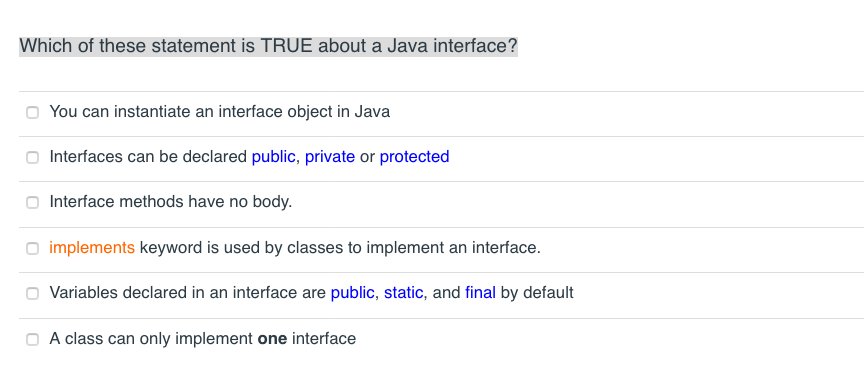



Which Of These Statement Is True About A Java Chegg Com




How To Instantiate An Object In Java Webucator




How To Instantiate An Object In Java Webucator




Instantiate Action Error Java Class Not Found Oneplus Community




Cannot Instantiate Test Steps Class Stack Overflow
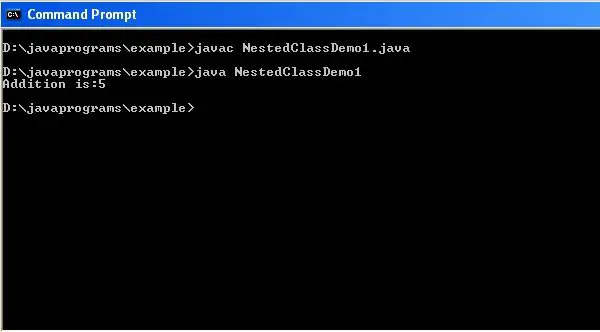



How To Instantiate An Inner Class Code For Nested Class In Java
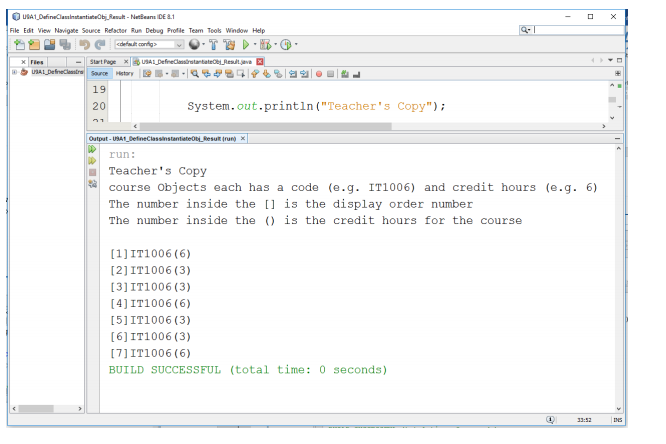



Need Java Code For This Define Java Classes And Chegg Com




How To Use The This Keyword To Call Another Constructor In Java Webucator
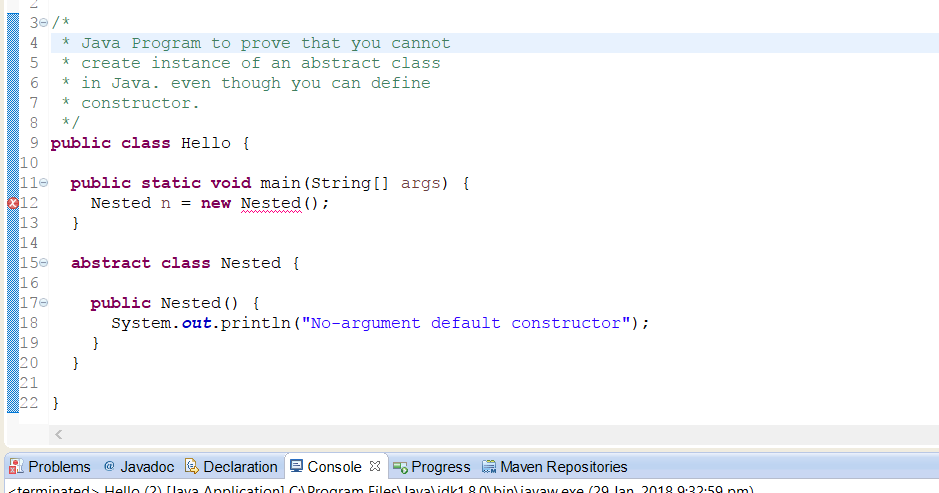



Java67 Is It Possible To Create Object Or Instance Of An Abstract Class In Java
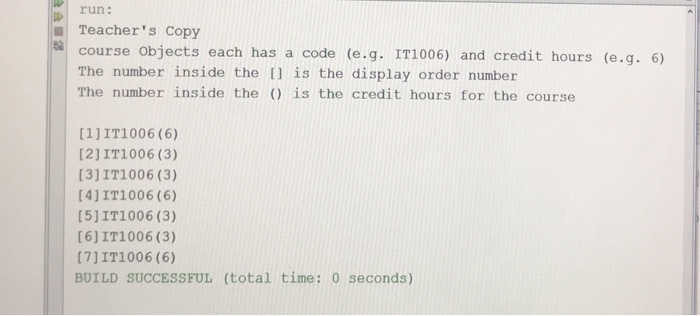



Solved Define Java Classes And Instantiate Their Objects Chegg Com



How Do I Instantiate An Object Of A Class Via Its String Name Web Tutorials Avajava Com




Daniel Dietrich Java Vs Vavr Example Search Directories For Java Files And Instantiate Their Corresponding Classes Both Implementations Are Basically Identical However It Shows That It Is Cumbersome To Wrap




How To Instantiate An Object In Java Webucator




Java Optimization Casting Or Instantiating New Object Stack Overflow




Question 1 Student Java Is A Java Class File Write A Chegg Com



Bounded Types In Generics Benchresources Net




How To Create A Java Bean Webucator




How To Load And Instantiate Java Class Dynamically Using Java Reflection Api Youtube




7 3 Object Instantiation How To Create Object In Java Youtube



First Course In Java Session 7




Instantiate A Private Class From Java Main Function Stack Overflow
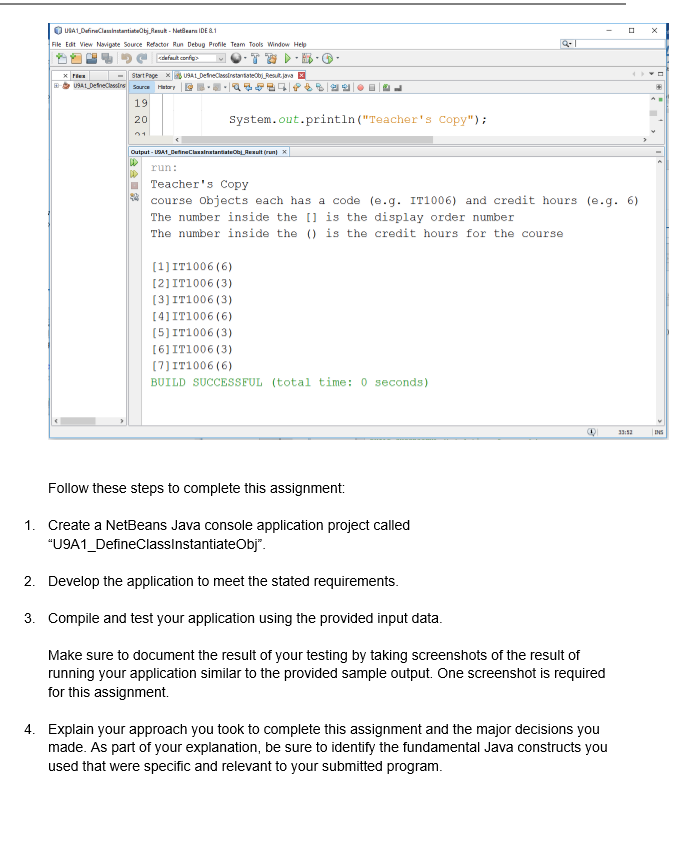



Solved Define Java Classes And Instantiate Their Objects Chegg Com



Cannot Instantiate The Type Java




How To Create An Object In Java Quora




Answered Q2 Given Below Is The Code For The Bartleby




Instantiate An Abstract Class In Java Youtube




Unable To Instantiate Action Xxxaction Defined For Xxx In Namespace Xxxaction Programmer Sought



Understanding Observable Collections Collections And Concurrency Javafx 2 Part 1




Unable To Instantiate With Defaultazurecredential Despite Setting Required Environment Variables Azure Sdk For Java




1 2 3 4 5 Abstract Methods And
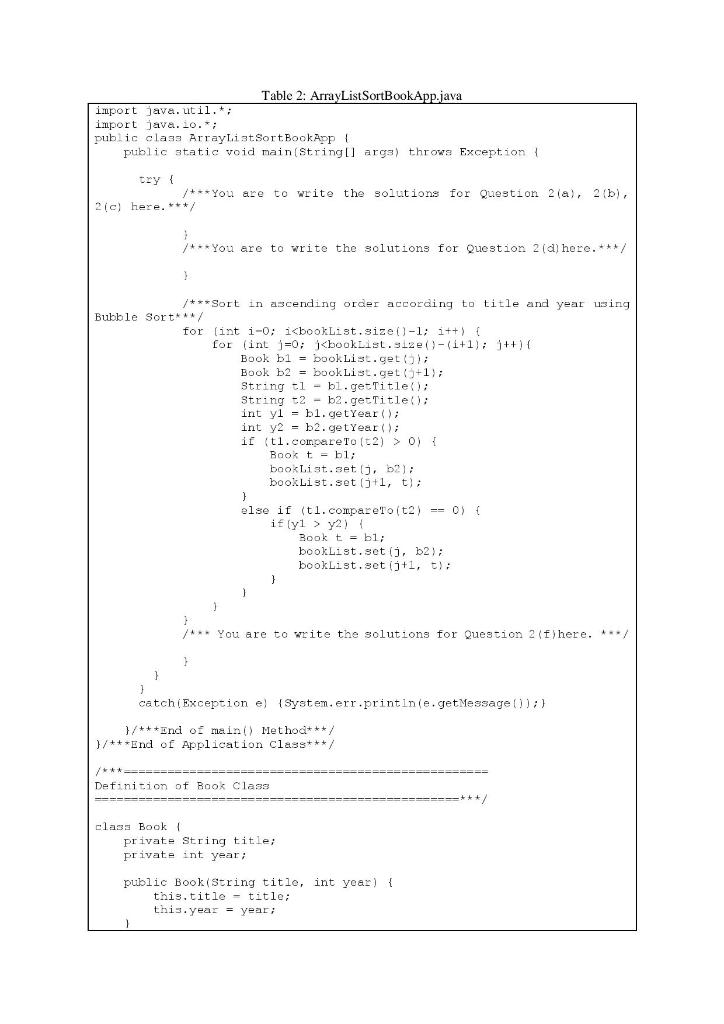



Solved B Instantiate Object Of Book To Store Each Of The Chegg Com



Generics Classes In Java Benchresources Net



Cannot Instantiate Java Class Dell Community



5 Marks In Java We Can Instantiate An Iterator Of A List Each Time The Iterator Is Called It Returns The Next Item In A List Implement A Course Hero



Generics Classes In Java Benchresources Net




Instantiating Objects In Java Youtube



Java Private Constructor Benchresources Net




Page Object Model With Java Generics




Xyz Code Declare Instantiate Initialize And Use A One Dimensional Array




Cannot Instantiate The Type Configuration Mirror Api Stack Overflow



1
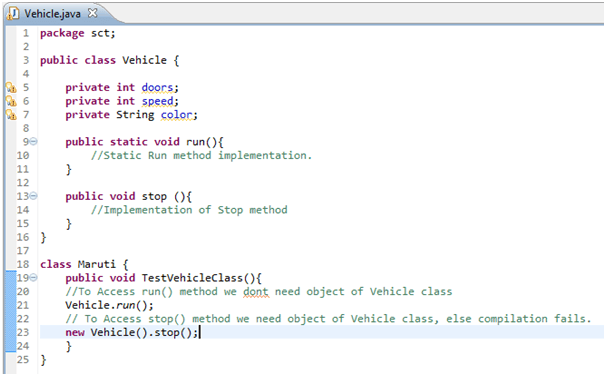



Java Class Methods Instance Variables W3resource
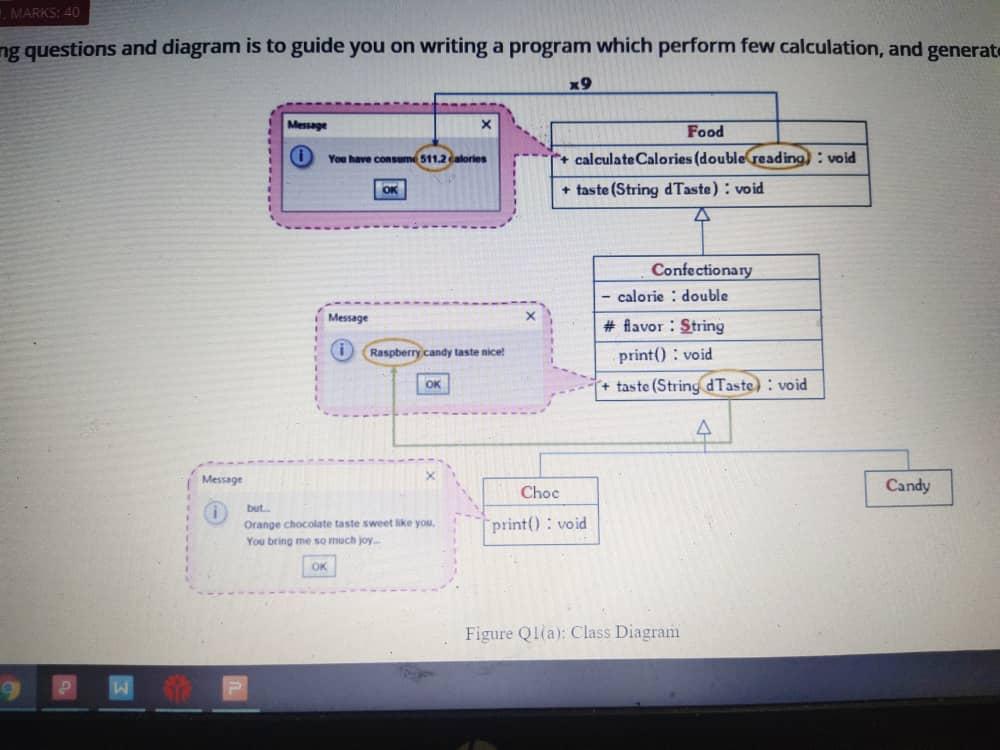



A Create A Program Named Eat Java That 1 Chegg Com




Dale Roberts Introduction To Java Input Program Control And Instantiation Dale Roberts Lecturer Computer Science Iupui Ppt Download




What Every Java Developer Needs To Know About Ims Ims Ug February 2
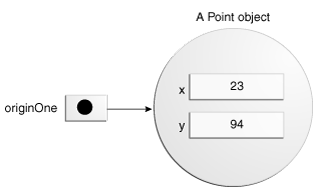



Creating Objects The Java Tutorials Learning The Java Language Classes And Objects


